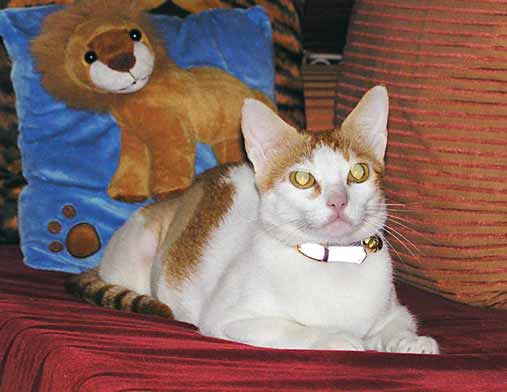A guide to caring for your pet during his final days
Coping with the impending loss of a pet is one of the most difficult experiences a pet parent will face. Whether your furry friend is approaching his golden years or has been diagnosed with a terminal illness, it’s important to calmly guide the end-of-life experience and minimize any discomfort or distress. As your pet’s health declines, you may elect to care for your pet at home—with the supervision of a veterinarian—or you may decide to end his suffering with euthanasia.
Whatever course you choose, you’re not alone—the ASPCA is here to help. Below are the answers to some frequently asked questions about making your pet’s final days peaceful and dignified.
My Pet Is Elderly and Will Soon Pass Away. How Can I Make My Home More Comfortable for Her?
The most important thing you can do for your elderly pet is to minimize any pain or distress she’s experiencing at the end of her life. First, be sure to consult with your veterinarian and treat any health problems, since undiagnosed issues can cause discomfort and rapid deterioration.
The most important thing you can do for your elderly pet is to minimize any pain or distress she’s experiencing at the end of her life. First, be sure to consult with your veterinarian and treat any health problems, since undiagnosed issues can cause discomfort and rapid deterioration.
Make your pet feel secure by surrounding her with her favorite things, like a warm blanket or special squeaky toy. Since pressure sores can develop in pets with limited mobility, it’s also essential to provide a warm sleeping spot with plenty of cushioning.
Some older pets may develop incontinence, or the loss of bladder control, so be sure to check your furry friend regularly for any wetness or soiling. If your pet needs help getting up to urinate or defecate, you can purchase a sling or use a large towel to wrap under her body and assist her.
What Determines a Good Quality of Life for My Pet?
- Does your pet seem irritable, restless or confused?
- Has he lost his appetite or does he drink water excessively?
- Does he avoid his favorite activities?
- Is your pet picked on by other animals in the home? This can happen when a sick or elderly dog becomes the weakest member of the “pack.”
- Does he seek out unusual places to sleep or hide?
When your pet’s quality of life deteriorates due to an untreatable disease or aging, please speak with your veterinarian and family members about end-of-life issues.
How Can I Tell if My Pet Is in Pain?
When cats and dogs are suffering, they may not show outward signs that we normally associate with pain like whimpering or crying. Sometimes an animal will continue to eat or drink in spite of pain, panting or disorientation. Some physiological and behavioral signs that your pet might be experiencing pain include:
- excessive panting or gasping for breath
- reclusiveness
- reluctance to move
- food pickiness
If you’re unsure of how much your pet is suffering, keep a daily record of good days and bad days. It’s also important to ask your veterinarian for the exact signs of suffering likely to be associated with your pet’s condition or disease.
Are There Any Behavioral Changes I Might See in My Sick Pet or Other Pets in the Household?
Irregular behavior patterns are often the first sign that your pet is ill or in pain. A pet may lose his normal activity levels, appetite and grooming tendencies, or he may exhibit inappropriate elimination, vocalization and aggression.
Other healthy pets in the household may experience similar abnormal behaviors as a reaction to the changes and distress of your sick animal companion. Be sure to get regular check-ups for all of your pets to monitor and protect against any undiagnosed issues.
What Are Some At-Home Pain Management Options for My Elderly Pet?
If you suspect your pet is in pain, please make an appointment with a veterinarian for a physical examination and consultation. Your veterinarian will explain the pain management protocol associated with your pet’s specific condition. For pain due to arthritis, for example, a non-steroidal anti-inflammatory drug may be prescribed, but only after blood tests ensure that your pet does not have kidney or liver problems that would preclude using this type of medication. If your pet has more severe pain, due to a chronic illness like cancer, your veterinarian may prescribe a narcotic pain killer in the form of an oral medicine or a patch that is placed on the skin.
Will My Other Pets Grieve a Pet Who Has Passed Away?
After the loss of a companion animal, many people observe a change in their surviving pet’s behavior. Sometimes the pet appears depressed and shows diminished interest in play or food, and it often helps to simply give your surviving pet some extra attention and love. If your animal companion appears upset, check with a veterinarian to make sure there is no underlying medical problem causing his behavior. It is also well-documented that pets can recognize death in a companion animal. Cats, dogs and horses who see the deceased body of an animal they knew can adjust very well and spend less time searching and grieving than pets who have not seen their companion’s remains.

















